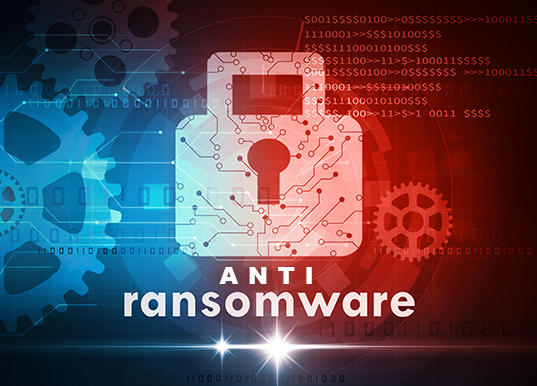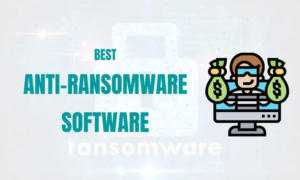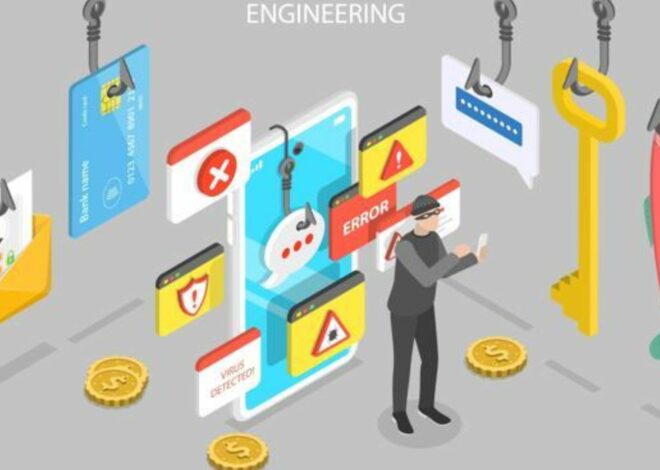
Ransomware vs. Anti-Ransomware Software
In the ever-evolving landscape of cyber threats, ransomware has emerged as a formidable adversary. It can strike swiftly and silently, encrypting your valuable data and holding it hostage until a ransom is paid. To defend against this digital menace, a new breed of heroes has risen – anti-ransomware software. In this blog post, we embark on a journey to understand the dynamics of this battle: Ransomware vs. Anti-Ransomware Software.

The Rise of Ransomware
Ransomware attacks have become increasingly sophisticated, making headlines worldwide. The attackers often use social engineering techniques, such as phishing emails, to deceive individuals and organizations into downloading malicious payloads. These payloads then encrypt files and demand ransoms, typically in cryptocurrencies like Bitcoin, in exchange for the decryption key. From individuals losing personal photos to major corporations paying hefty ransoms, the impact is undeniable.
What Is Anti-Ransomware Software?
Enter our hero, anti-ransomware software. But what exactly is it? How does it work to protect your digital assets? Anti-ransomware software is a specialized type of security tool designed to detect and thwart ransomware attacks. It operates by monitoring system behaviour and identifying patterns that resemble ransomware activity. When suspicious behaviour is detected, it takes action to stop the attack in its tracks, preventing the encryption of your files. These tools are constantly updated with the latest threat intelligence to stay one step ahead of cybercriminals.
Prevention vs. Cure
Prevention is often touted as the best defence against ransomware attacks. There are several proactive measures you can take to safeguard your data. Regular backups of your critical files are a crucial part of this strategy. If your data is backed up, you can restore it without paying the ransom if you fall victim to an attack. Additionally, employee training is essential. Many ransomware attacks begin with phishing emails that trick employees into clicking on malicious links or attachments. By educating your staff about the dangers of phishing and how to recognize suspicious emails, you can reduce the risk of a successful attack.
Types of Anti-Ransomware Software
Anti-ransomware software comes in various forms, each with its unique approach to thwarting ransomware attacks. Signature-based anti-ransomware relies on a database of known ransomware signatures to identify threats. Behaviour-based anti-ransomware, on the other hand, analyzes the behaviour of running processes and flags any that exhibit ransomware-like actions. Some solutions even offer multi-layered protection, combining signature-based and behaviour-based techniques for enhanced security.
How Anti-Ransomware Software Works
Let’s peek behind the curtain and understand the mechanisms that anti-ransomware tools employ to detect and neutralize threats. Many anti-ransomware solutions use heuristic analysis, a method that examines the behaviour of software to identify potential threats. When a program behaves suspiciously, the anti-ransomware tool can stop it from causing harm. Others use machine learning algorithms to recognize patterns associated with ransomware activity, enabling them to respond swiftly to new and evolving threats. Understanding how these tools work is crucial in appreciating their role in defending against ransomware.
The Effectiveness of Anti-Ransomware Software
Do anti-ransomware tools live up to the hype? Their effectiveness can vary depending on several factors, including the specific tool, its configuration, and the timeliness of updates. However, many anti-ransomware solutions have proven highly effective in blocking ransomware attacks. They have saved countless individuals and organizations from the anguish and financial burden of falling victim to ransomware. We’ll assess their effectiveness and discuss real-world scenarios where they’ve thwarted ransomware attacks.
Choosing the Right Anti-Ransomware Software
Selecting the right anti-ransomware software is crucial. When evaluating these tools, consider factors such as the tool’s detection methods, its track record in stopping ransomware, and its ease of use. Additionally, look for software that provides regular updates to stay ahead of emerging threats. Some well-known anti-ransomware solutions include Bitdefender Anti-Ransomware, Malwarebytes Anti-Ransomware, and Cybereason RansomFree.
Staying Informed
The world of cybersecurity is dynamic, with new threats emerging regularly. Staying informed about the latest ransomware trends and techniques can enhance your defence. Organizations should actively participate in threat intelligence-sharing communities to receive timely information about new threats and vulnerabilities. Regularly updating your anti-ransomware software is equally crucial. Cybersecurity is an ongoing battle, and awareness is your first line of defence.
Conclusion
In this concluding section, we’ll summarize the epic battle between ransomware and anti-ransomware software. Who emerges victorious in this digital duel, and what can you do to fortify your defences? The key takeaway is that while ransomware is a persistent threat, anti-ransomware software has proven to be a formidable defence. By combining preventive measures, employee training, and the right anti-ransomware tools, you can significantly reduce your risk of falling victim to ransomware attacks


